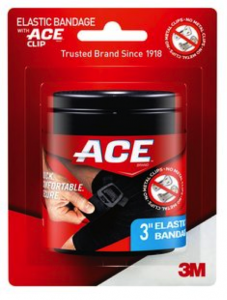I was watching the PGA Championship this past weekend and the extraordinary run of Rory McIlroy as, stroke by stroke, he made his way to victory. My husband and I began commenting on how common back injuries are in the sport and that a lot of the top players are walking wounded.
In golf, you’re only swinging in one direction. Hundreds of times a day when you count time on the driving range practicing. This puts a lot of repeated pressure on the spine, and among elite golfers back, hip, and knee injuries are common. Take this same idea and apply it to a major league pitcher or professional tennis player … and they have a lot of similar problems, as well as adding in shoulder and elbow issues.
Enter Cross-Training
Elite-level athletes and their coaches know the importance of cross-training to stay injury free. Time spent practicing and perfecting your sport must be incorporated into training for balance.
And I literally mean balance. BOSU training is popular with athletes because as you stand on an uneven surface your entire body must respond to maintain its position. Squats are hard, but one-legged squats while standing on a BOSU are really hard. You won’t be using just your glutes to move up and down; everything will be contracting rapid-fire to keep you standing upright.
Choices for Cross-Training
When thinking about cross-training you should consider your preferred sport and where you are injury-prone. Here are a few suggestions for you:
Running: Quite possibly the most injury-prone sport there is, runners often suffer from leg and back problems. Cross-training for runners should include time in the weight room strengthening both inner and outer leg muscles. Runners should also consider other sports like biking and swimming to give their body a break from all the impact.
Tennis: You predominantly twist in one direction with tennis causing a lot of torque on the knee, the spine, and of course, the dreaded tennis elbow. Focus on working towards balance with activities such as yoga or Pilates. A great cross-training for tennis is a group exercise Spin class that will keep your cardio endurance up, but keeps wear and tear to a minimum.
Weight training: A lot of people love to push iron around and build sculpted muscles. This causes a lot of wear and tear on the joints and can cause injury over time. Make sure you’re building the opposing muscle groups evenly (i.e., don’t over train your chest and ignore your back). The best cross-training option is to leave the gym behind and hit the great outdoors. Activities like hiking or swimming at the beach are perfect, using your muscles in a more natural movement pattern to develop balance throughout your frame.
Biking: The repetitive motion of pedaling can stress the knees and hips. In addition, cyclists tend to over-use the quads and under-engage the hamstrings causing imbalance in those opposing muscles. Great cross-training options for biking are any activity where you move sideways. Consider a dance class, tennis, or yoga to work your muscles from new directions.
Barre classes: Barre devotees are starting to see a spike in injuries. Some styles of this popular group exercise class incorporate dozens of squats and not always with proper alignment. My Pilates studio has seen quite a few knee and lower back injuries from barre participants. Honestly, and I’m biased here, Pilates is a fantastic cross-training option for barre. There is a wide variety of movements so repetition is never a problem and a dancers’ alignment is always in kept in mind.

ACE™ Brand Has Fixed the Clip!
There you have it … some ideas for cross-training to stay injury free. Of course if an injury does happen, you might want to bust out your ACE™ Brand Elastic Bandage featuring the new ACE™ Brand Clip, redesigned with a unique fastener that lets you adjust on the fly and provides customization compression for proper support while your recover. Learn more about ACE™ Brand on Facebook, Twitter, and YouTube.
Don’t forget to check out my other post about how to recover from an injury if the worst does happen to you.
Tell me what your favorite sport is and how you cross-train. I’d love to hear your stories.